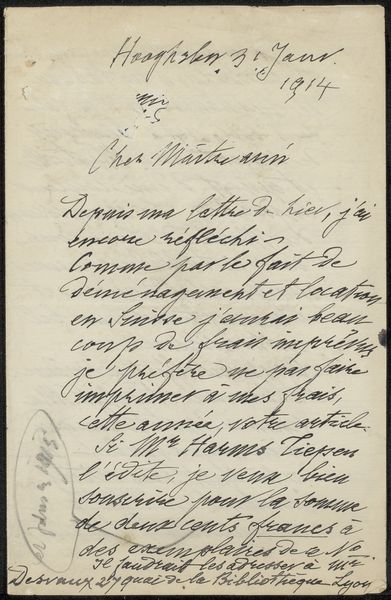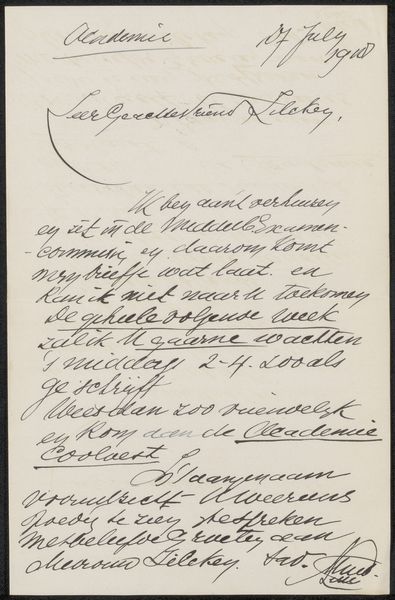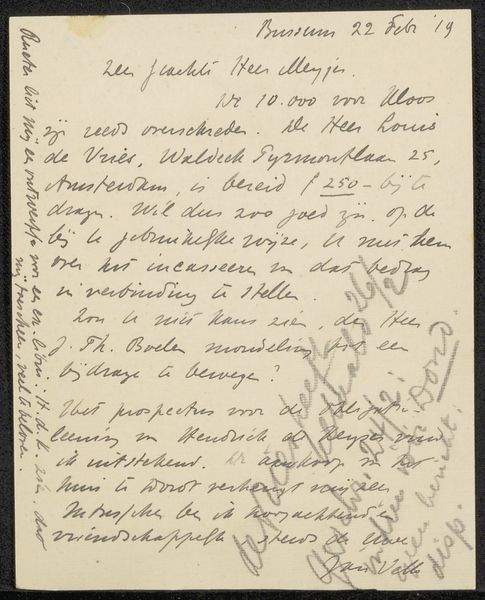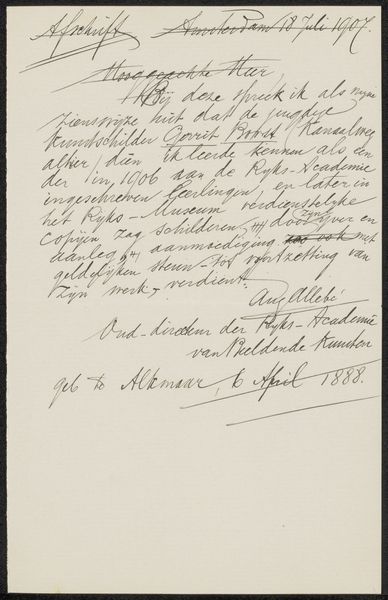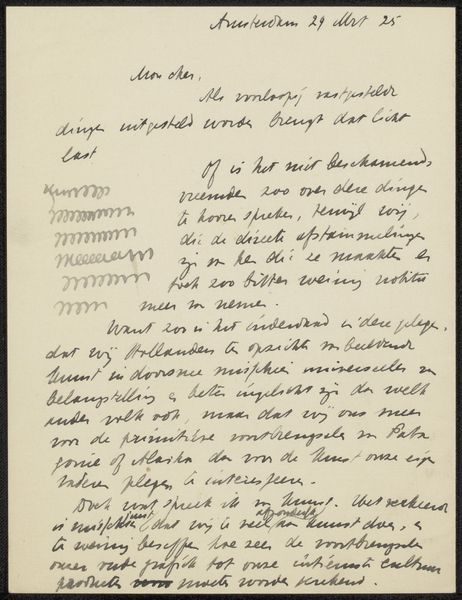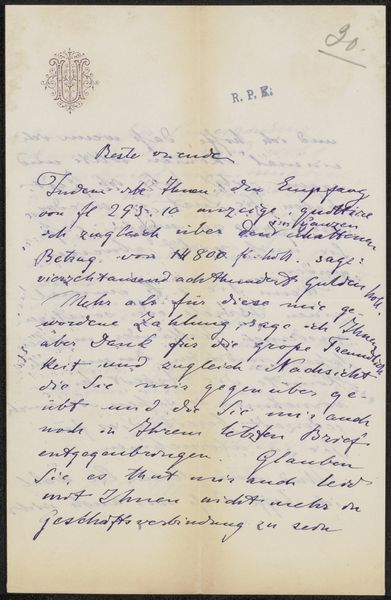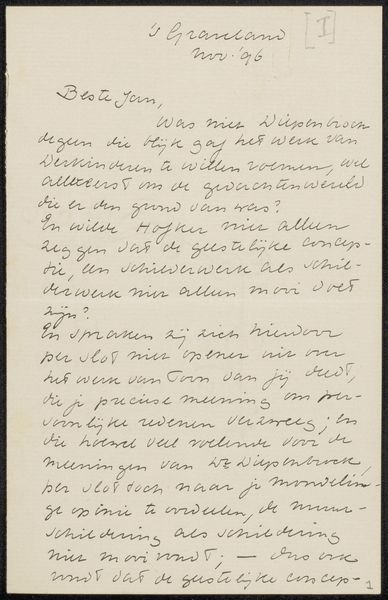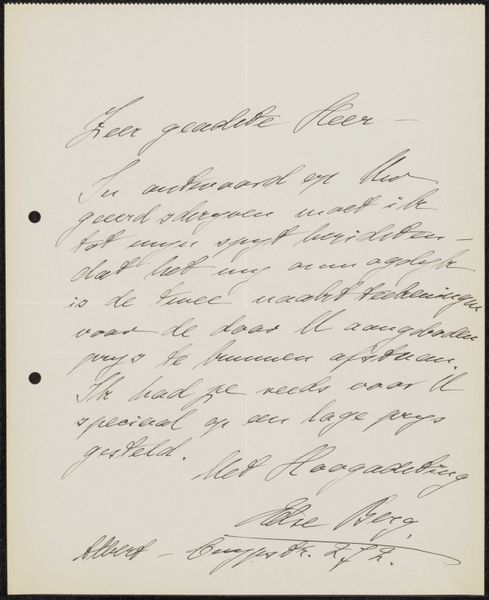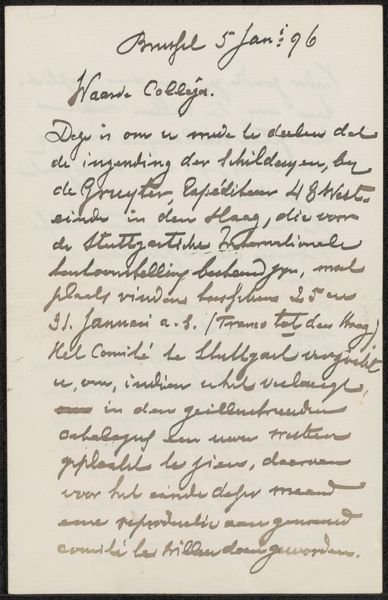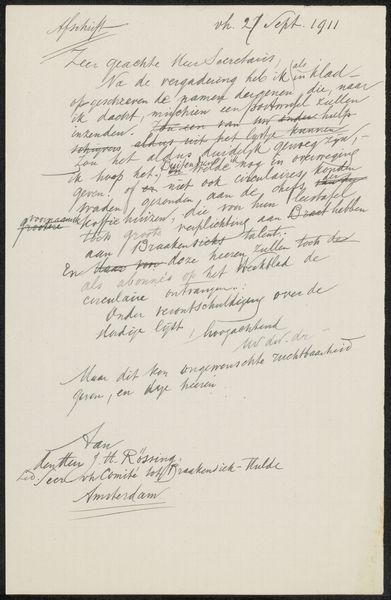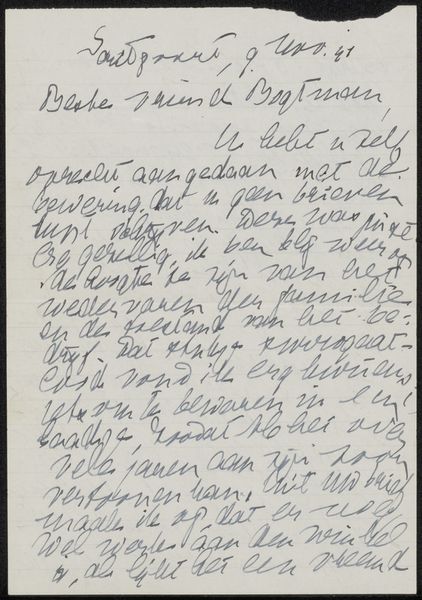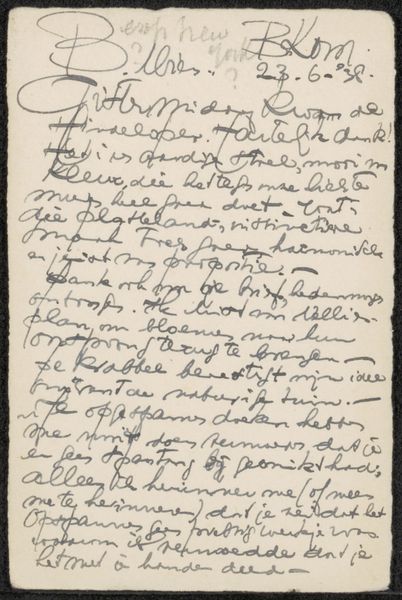
drawing, ink
#
drawing
#
ink
Copyright: Rijks Museum: Open Domain
Editor: This is "Brief aan Philip Zilcken," possibly from 1914, a drawing in ink by Alphonse Stengelin. It looks like a handwritten letter, doesn't it? The handwriting is beautiful, but the letter itself seems fragile, almost pleading. What strikes you about this piece? Curator: Immediately, the materiality of the letter speaks volumes. The handwriting, rendered in ink, points to a very specific time. What’s particularly striking to me is that 1914 situates this letter on the cusp of the First World War. How does understanding this letter’s potential context influence your experience with the artwork? Editor: Wow, that’s something I hadn’t considered. Knowing that it was written right before the war adds a layer of tension, especially since he's wishing Zilcken well for the new year. Curator: Precisely. The personal, almost intimate nature of a handwritten letter then takes on a much broader resonance. The seemingly innocuous details -- his hopes for Zilcken’s success, his travel plans -- become fragile testaments to a world on the brink of immense upheaval. Notice the word choice. What might they tell us about their relationship or the sociopolitical undercurrents of their time? Editor: It sounds like they had a warm friendship, but also a sense of professional respect; I wonder if Zilcken was a mentor to Stengelin? It is almost like a time capsule... filled with hope, unknowingly facing historical disruption. Curator: Exactly. This letter now transcends its function as mere correspondence and turns into a powerful artifact reflecting the intersection of personal lives and broader historical forces. Considering how artwork documentation is overwhelmingly gendered and western centric, how might researching figures like Stengelin allow us to complicate this issue? Editor: That is such a good question to ponder. I will keep that in mind during my research! I hadn’t considered that a seemingly simple letter could contain so much. Thanks for your insights. Curator: And thank you for prompting such thoughtful considerations. This piece reminds us to think intersectionally about the artworks that exist outside the cannon, placing historical documentation into a network of gender, race, and politics.
Comments
No comments
Be the first to comment and join the conversation on the ultimate creative platform.
